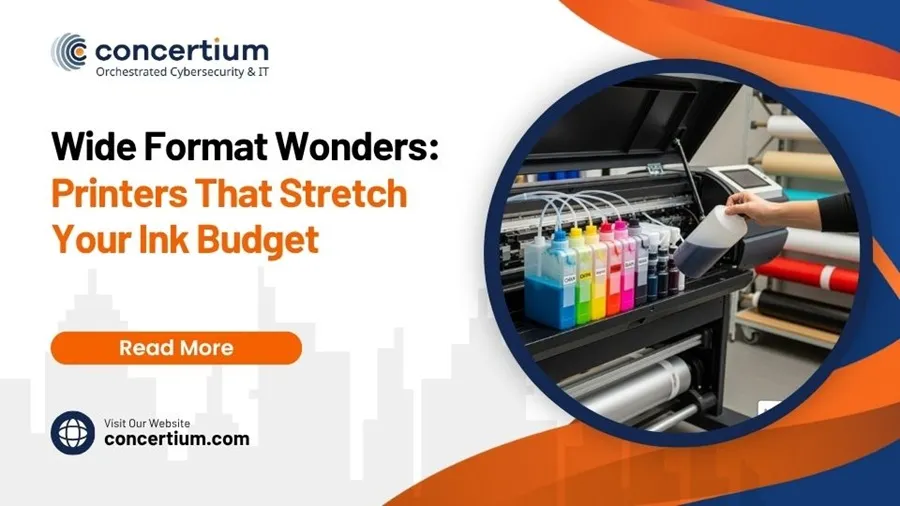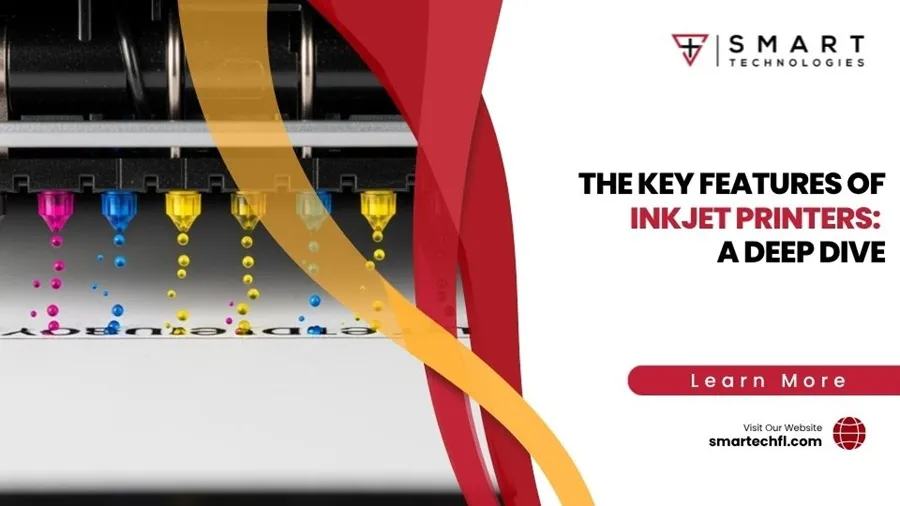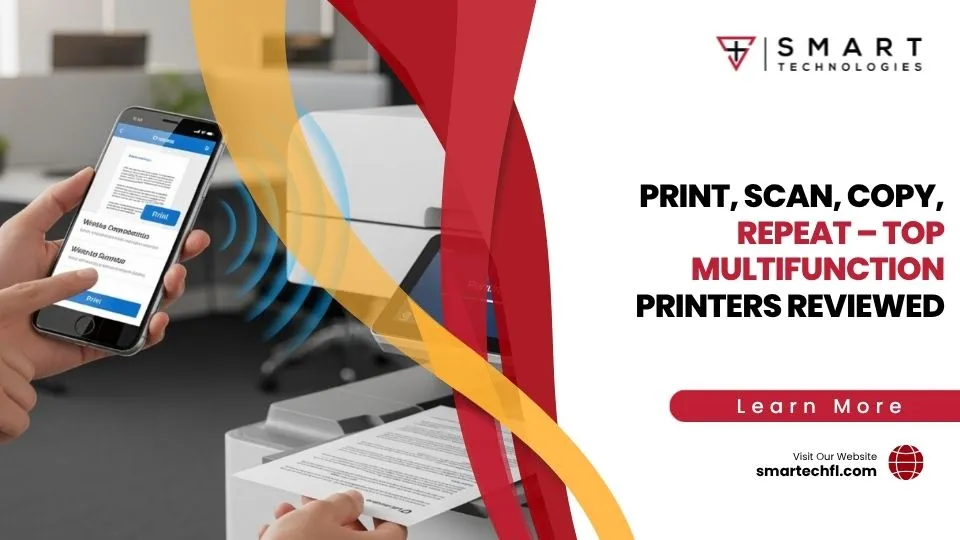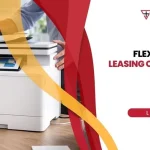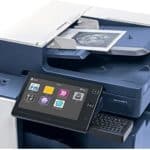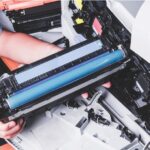Top Printer Lease Options for Efficient Office Management
Efficient management of office equipment is crucial for maintaining productivity and controlling costs. One effective way to achieve this is through leasing office equipment such as printers and copiers. Leasing allows businesses to access high-quality equipment without the hefty upfront costs associated with purchasing.
Moreover, it offers flexibility, enabling companies to upgrade their equipment as technology evolves or their needs change. In this article, we will explore the various aspects of printer and copier leasing, helping you understand why it might be the right choice for your business.
Printer and Copier Leasing: A Comprehensive Guide
Understanding Printer and Copier Leasing
What is Printer Leasing?
Printer leasing is a financial arrangement where a business can use a printer or copier for a set period in exchange for regular payments, typically monthly. Unlike purchasing, leasing does not involve the full upfront cost of the equipment, making it a more accessible option for many businesses, especially small to medium-sized enterprises. Leasing can be done on a rental basis (short-term) or through a more extended lease agreement, often spanning several years. This flexibility is one of the key reasons why many businesses opt to lease rather than buy.
There is a distinction between leasing and renting. Renting is usually for short-term needs, where the equipment might be needed for a specific project or period. On the other hand, leasing is a long-term commitment, often with an option to purchase the equipment at the end of the lease term. This arrangement is particularly beneficial for businesses that require high-end printers or copiers but want to avoid the financial strain of purchasing.
Benefits of Leasing Over Buying
When deciding between leasing and buying, it’s essential to consider the specific needs and financial situation of your business. Leasing a copier or printer can offer several advantages over purchasing:
- Lower Upfront Costs: One of the most significant benefits of leasing is the reduction in upfront costs. Purchasing high-quality office equipment like a commercial copier can be expensive, which can strain a business’s cash flow. Leasing spreads the cost over time, making it more manageable.
- Maintenance and Support Included: Many leasing agreements include maintenance services, ensuring that the equipment runs smoothly throughout the lease term. This can save businesses from unexpected repair costs and downtime, offering peace of mind.
- Flexibility and Upgradability: Leasing allows businesses to upgrade their equipment at the end of the lease term, ensuring they always have access to the latest technology. This is especially important in industries where technology evolves rapidly.
- Tax Benefits: Leasing payments can often be deducted as a business expense, offering potential tax benefits.
- Improved Cash Flow Management: By leasing, businesses can preserve capital for other investments, maintaining better cash flow management.
Key Factors to Consider in a Copier Lease
Types of Equipment Available for Lease
When leasing a copier or printer, it’s important to choose equipment that meets your business needs. There are various types of copiers and printers available for lease, each with its own set of features and benefits:
- Multifunction Printers (MFPs): These are all-in-one devices that can print, scan, copy, and sometimes fax. MFPs are highly versatile and can replace several different machines, saving space and simplifying workflow. They are ideal for businesses that require a comprehensive document management solution.
- Color Laserjet Printers: These are essential for businesses that need high-quality color printing. Color laserjets are typically more expensive to purchase outright, making them a popular option for leasing.
- Xerox and HP LaserJet Models: Brands like Xerox and HP offer a wide range of leasing options for their high-performance laserjet models. These printers are known for their reliability and are often used in high-demand environments.
- Xerox VersaLink and AltaLink: These are advanced series from Xerox, designed for medium to large businesses. They offer robust performance, security features, and are ideal for organizations that need to handle large volumes of printing and copying.
Choosing the right type of copier or printer for your business is crucial. Consider the specific needs of your business, such as the volume of printing, the need for color versus monochrome printing, and whether multifunction capabilities are required.
Understanding Lease Terms
Understanding the terms of your lease is crucial to making an informed decision. Here are some key aspects to consider:
- Lease Term Duration: The length of the lease term can vary, typically ranging from 12 to 60 months. Shorter terms might result in higher monthly payments but offer more flexibility to upgrade equipment sooner.
- Monthly Payments: Payments are usually fixed throughout the lease term, making it easier to budget. Be sure to understand what is included in your monthly payment—whether it covers maintenance, supplies like toner, and any additional services.
- End-of-Lease Options: At the end of the lease, you typically have several options: you can renew the lease, upgrade to new equipment, purchase the equipment at its residual value, or return the equipment. Understanding these options in advance can help you plan for the future.
- Lease Agreement Clauses: Pay attention to the specific terms of the lease agreement. This includes understanding the responsibilities for maintenance and repair, what happens in case of early termination, and any penalties or fees associated with the lease.
- Hidden Costs: Always inquire about any hidden costs that might not be immediately apparent, such as charges for exceeding a certain number of prints or copies, delivery fees, or costs for returning the equipment at the end of the lease.
Understanding these terms will ensure that there are no surprises during the lease term and that the agreement aligns with your business needs and budget.
Costs Associated with Leasing a Copier
Leasing a copier involves several costs that you should be aware of:
- Monthly Cost: This is the most straightforward cost, but it’s important to ensure that the monthly payment fits within your budget. Consider whether it includes maintenance and supplies or if those are additional costs.
- Upfront Costs: While leasing typically reduces the need for a large upfront payment, some leases may require an initial setup fee or security deposit.
- Additional Costs: Be aware of any potential additional costs such as delivery, installation, or removal fees. Also, consider costs related to exceeding usage limits or needing extra services.
- Maintenance and Supplies: Some leases include maintenance and supplies like toner as part of the monthly payment, while others do not. If these are not included, they can add up quickly and should be factored into your total cost of ownership.
- Cost of Leasing vs. Buying: While leasing can be more affordable in the short term, it’s important to compare the total cost over the entire lease term with the cost of purchasing the equipment outright. In some cases, buying might be more cost-effective if you plan to use the equipment for a long time.
- Tax Implications: Leasing payments are often fully deductible as a business expense, which can be a significant financial benefit. However, it’s advisable to consult with a tax professional to understand the specific implications for your business.
Understanding these costs will help you make an informed decision and ensure that leasing is a financially sound choice for your business.
Selecting the Right Copier and Printer for Your Business Needs

Choosing Between Different Copier and Printer Models
Selecting the right copier or printer is essential to meet your business needs efficiently. Here’s how to make the best choice:
- Evaluate Your Business Requirements: Consider the volume of printing and copying your business requires. For high-volume environments, a robust multifunction copier or a commercial-grade printer like the Xerox AltaLink or HP LaserJet might be necessary.
- Consider Future Growth: Choose equipment that can scale with your business. Multifunction devices are often the best choice for growing businesses due to their versatility.
- Brand and Model Comparison: Compare popular models such as Xerox VersaLink, Xerox AltaLink, and HP LaserJet. Assess features like speed, capacity, and cost-effectiveness.
- Customization: Ensure that the copier or printer you choose can be tailored to fit your business needs. Some leasing companies offer customization options, so you can add features or upgrade as necessary.
- Budget Considerations: Align your choice with your budget. While high-end models offer more features, they come at a higher cost. Make sure to choose a model that fits your financial plan without sacrificing essential features.
- Best Deal Evaluation: Look for the best deals offered by leasing companies, which might include discounts for longer lease terms, bundled maintenance services, or additional features at no extra cost.
Choosing the right copier or printer can significantly impact your business’s efficiency and productivity. Make sure to thoroughly evaluate all options before making a decision.
Lease vs. Buy: Which Option is Best?
Deciding whether to lease or buy your office equipment is a critical decision that can affect your business’s financial health:
- Advantages of Leasing:
- Cost Management: Leasing allows businesses to manage their costs better by spreading payments over time, reducing the impact on cash flow.
- Access to Latest Technology: Leasing ensures that your business always has access to the latest technology without needing to make large capital expenditures.
- Included Services: Many leases include maintenance and support services, which can save money and reduce downtime.
- Advantages of Buying:
- Ownership: Purchasing means you own the equipment outright, which can be a long-term cost saver if you plan to use the equipment for many years.
- Customization: Owning your equipment allows you to modify it as needed without restrictions imposed by a leasing agreement.
- No Monthly Payments: Once purchased, there are no ongoing monthly payments, which can be beneficial for long-term financial planning.
- Situations Where Leasing May Be Better:
- If your business is growing rapidly and may need to upgrade equipment frequently.
- If preserving cash flow is a priority.
- If you prefer to avoid the responsibility of maintenance and repairs.
- Situations Where Buying May Be Better:
- If you expect to use the equipment for many years.
- If you have the capital available and want to avoid ongoing payments.
- If customization is crucial to your operations.
Ultimately, the choice between leasing and buying depends on your business’s unique needs and financial situation. Consider all factors carefully to determine which option is best for your organization.
The Leasing Process and Best Practices
Finding a Reputable Leasing Company
Choosing a reputable leasing company is a crucial step in the leasing process. A well-established leasing company not only provides quality equipment but also offers reliable service and support throughout the lease term. Here’s how to find and evaluate the best leasing companies:
- Research and Reviews: Start by researching leasing companies online. Look for reviews and testimonials from other businesses that have leased similar equipment. Websites like Google Reviews, Trustpilot, and industry-specific forums can provide insights into the company’s reputation.
- Service Agreements: Check if the leasing company offers comprehensive service agreements that cover maintenance, repairs, and supplies like toner. A good service agreement ensures that your copier or printer will run smoothly throughout the lease term, minimizing downtime and unexpected costs.
- Customer Support: Evaluate the company’s customer support. Quick response times and effective solutions are critical, especially if your business relies heavily on its copiers and printers. Consider how the company handles service requests, and whether they provide onsite support.
- Experience and Expertise: Opt for a leasing company with experience in your industry. A company that understands your business operations is more likely to provide equipment and services tailored to your needs.
- Transparent Leasing Terms: Ensure the leasing company provides clear and transparent terms. This includes details about lease duration, monthly payments, maintenance coverage, and end-of-lease options. Avoid companies that are vague about their terms or have hidden fees.
- Flexibility: Choose a leasing company that offers flexibility in lease agreements, allowing you to upgrade equipment or adjust terms as your business needs change.
Finding a reputable leasing company can significantly impact your leasing experience, ensuring that you receive reliable equipment and excellent service.
Understanding and Negotiating Lease Agreements
A lease agreement is a legally binding contract that outlines the terms and conditions of the lease. It’s essential to understand and, if possible, negotiate these terms to ensure they align with your business needs. Here’s what to consider:
- Key Components of a Lease Agreement:
- Lease Term: The duration of the lease, typically ranging from 12 to 60 months.
- Monthly Payments: The agreed-upon amount to be paid each month.
- Included Services: Details on whether maintenance, repairs, and supplies are included in the lease.
- End-of-Lease Options: Options available at the end of the lease term, such as upgrading, purchasing, or returning the equipment.
- Negotiating Lease Terms:
- Monthly Payments: You may be able to negotiate lower monthly payments, especially if you’re committing to a longer lease term.
- Maintenance and Support: Ensure that the lease includes comprehensive maintenance and support. If not included, negotiate to have these services added.
- End-of-Lease Clauses: Negotiate flexible end-of-lease options that allow you to upgrade or switch equipment without penalties.
- Avoiding Hidden Fees: Scrutinize the lease agreement for any hidden fees, such as early termination fees, fees for exceeding print or copy limits, or charges for returning the equipment. Ask the leasing company to clarify any ambiguous terms.
- Legal Review: Consider having a legal professional review the lease agreement before signing. This can help identify potential issues and ensure that the terms are favorable for your business.
By carefully reviewing and negotiating the lease agreement, you can secure terms that are favorable to your business and avoid costly surprises.
Managing Costs Throughout the Lease Term
Managing costs effectively throughout the lease term is crucial to ensure that leasing remains a cost-effective solution for your business. Here are some best practices:
- Track Usage: Regularly monitor the usage of your copiers and printers to ensure that you stay within the limits outlined in your lease agreement. Exceeding these limits can result in additional charges.
- Toner and Supplies: If toner and other supplies are not included in the lease, ensure that you purchase them from reliable sources. Buying in bulk can sometimes save costs. Some leasing companies offer discounted supplies as part of the lease.
- Preventative Maintenance: Schedule regular maintenance to prevent breakdowns and extend the lifespan of your equipment. Many leasing agreements include maintenance, but if yours doesn’t, it’s wise to set aside a budget for it.
- Energy Efficiency: Choose energy-efficient models to reduce operational costs. Modern copiers and printers often come with energy-saving modes that lower electricity consumption, which can lead to significant savings over time.
- End-of-Lease Planning: As the end of the lease approaches, plan ahead. Decide whether you want to upgrade, renew the lease, or purchase the equipment. Planning early can help avoid any lapses in equipment availability or unexpected costs.
- Budget for Unexpected Costs: Even with a well-negotiated lease, unexpected costs can arise. Set aside a small portion of your budget to cover any unforeseen expenses, such as repairs that aren’t covered by the lease.
Effectively managing these costs will help ensure that leasing remains a financially sound choice for your business throughout the lease term.
Maximizing the Benefits of Leasing for Your Business

Aligning Lease Terms with Business Needs and Budget
When leasing office equipment, it’s important to ensure that the lease terms align with your business needs and budget. Here’s how to do it:
- Assess Your Business Needs: Determine the specific requirements of your business, such as the volume of printing, the need for color versus monochrome printing, and the features required in a copier or printer. This assessment will guide you in selecting the right equipment and lease terms.
- Budget Considerations: Establish a budget for leasing and ensure that the monthly payments fit within it. Consider the total cost of the lease, including any additional costs like maintenance and supplies, to avoid exceeding your budget.
- Flexibility in Lease Terms: Choose lease terms that offer flexibility, allowing you to upgrade or adjust the equipment as your business grows or changes. This flexibility ensures that your leasing arrangement continues to meet your business needs over time.
- Cash Flow Management: Leasing can help manage cash flow by spreading out the costs of equipment over time. Ensure that your lease terms support your cash flow needs, especially during periods of financial fluctuation.
- Tailored Solutions: Work with your leasing company to tailor the lease terms to your specific business needs. This could include customized payment schedules, bundled services, or specific end-of-lease options.
- Planning for Growth: Consider how your business might grow or change over the lease term, and choose terms that can accommodate this growth. Leasing should support your business’s long-term goals, not just its current needs.
By aligning lease terms with your business needs and budget, you can maximize the benefits of leasing, ensuring that it remains a cost-effective and efficient solution for your office equipment needs.
Ensuring Your Copier and Printer Run Smoothly
To get the most out of your leased copiers and printers, it’s essential to ensure that they run smoothly throughout the lease term. Here are some tips:
- Regular Maintenance: Schedule regular maintenance to keep your equipment in top condition. This includes cleaning, replacing worn parts, and ensuring that all functions are working properly. Many leasing agreements include maintenance services, so take full advantage of this.
- Proper Usage: Train your staff on the proper use of the copiers and printers to avoid misuse or damage. This can include simple practices like using the correct type of paper, regularly replacing toner, and avoiding overloading the machine.
- Monitor Performance: Keep an eye on the performance of your copiers and printers. If you notice any issues, such as slower printing speeds or frequent paper jams, contact your leasing company for service. Early detection of problems can prevent bigger issues down the line.
- Energy Efficiency Practices: Implement energy-saving practices, such as turning off the equipment when not in use or utilizing energy-saving modes. This not only extends the lifespan of the equipment but also reduces operating costs.
- Utilize Support Services: Don’t hesitate to use the support services provided by your leasing company. Whether it’s troubleshooting a problem or getting advice on optimizing your equipment’s performance, these services are there to help you.
- Upgrade When Necessary: If your equipment is no longer meeting your needs, consider upgrading. Many leasing companies offer upgrade options as part of the lease, allowing you to stay current with the latest technology.
By following these practices, you can ensure that your leased copiers and printers operate efficiently, minimizing downtime and maximizing productivity.
What People May Also Ask
What is typically included in a Copier Lease Agreement?
A copier lease agreement usually includes the equipment itself, regular maintenance, and sometimes supplies like toner. It may also cover repairs and replacements if the equipment fails. Make sure to clarify what is included before signing the agreement.
Is it better to lease or buy a Copier?
Leasing is generally better for businesses that need to preserve cash flow, access the latest technology, and avoid the responsibilities of ownership. Buying may be better for businesses that have the capital and want to own the equipment outright. The decision depends on your business’s specific needs and financial situation.
What are the additional costs associated with leasing a copier?
Additional costs may include delivery and installation fees, fees for exceeding print or copy limits, and charges for returning the equipment at the end of the lease. Maintenance and supplies may or may not be included in the monthly payments, so clarify this with your leasing company.
How can I choose the right Copier for my business?
Choosing the right copier involves assessing your business’s needs, such as print volume, color requirements, and multifunction capabilities. Consider models like the Xerox AltaLink for high-volume needs or a multifunction printer for versatility. Work with a leasing company that can tailor the equipment to your specific needs.
What happens at the end of the Lease Term?
At the end of the lease term, you typically have options to upgrade to a new model, renew the lease, purchase the equipment at its residual value, or return the equipment. Discuss these options with your leasing company before the lease ends to plan your next steps.
Conclusion
Printer and copier leasing offers numerous benefits for businesses, including lower upfront costs, access to the latest technology, and flexibility in upgrading equipment. By understanding the leasing process, choosing the right equipment, and managing costs effectively, businesses can ensure that leasing remains a cost-effective and efficient solution. If you’re considering leasing, make sure to work with a reputable leasing company that can provide tailored solutions to meet your specific needs. Leasing may indeed be a better option for keeping your business operations running smoothly and efficiently.
You can contact us by phone, email, or by visiting our offices:
- Phone: (386) 261-8323
- Email: contact@smarttechfl.com
- Address: 771 Fentress Blvd. #10, Daytona Beach, FL 32114






